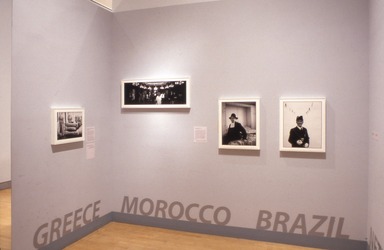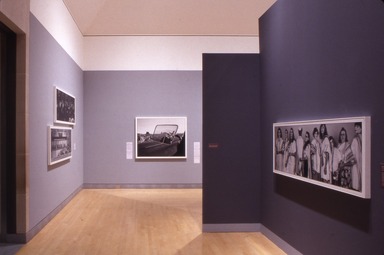

The Jewish Journey: Frederic Brenner's Photographic Odyssey, October 3, 2003 through January 11, 2004 (Image: DEC_E2003i001.jpg Brooklyn Museum photograph, 2003)
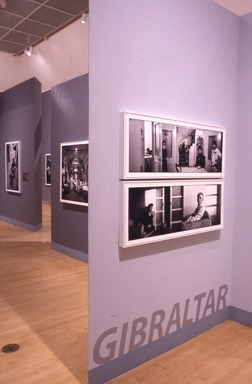
The Jewish Journey: Frederic Brenner's Photographic Odyssey, October 3, 2003 through January 11, 2004 (Image: DEC_E2003i002.jpg Brooklyn Museum photograph, 2003)

The Jewish Journey: Frederic Brenner's Photographic Odyssey, October 3, 2003 through January 11, 2004 (Image: DEC_E2003i003.jpg Brooklyn Museum photograph, 2003)

The Jewish Journey: Frederic Brenner's Photographic Odyssey, October 3, 2003 through January 11, 2004 (Image: DEC_E2003i004.jpg Brooklyn Museum photograph, 2003)
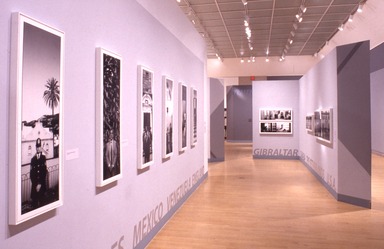
The Jewish Journey: Frederic Brenner's Photographic Odyssey, October 3, 2003 through January 11, 2004 (Image: DEC_E2003i005.jpg Brooklyn Museum photograph, 2003)

The Jewish Journey: Frederic Brenner's Photographic Odyssey, October 3, 2003 through January 11, 2004 (Image: DEC_E2003i006.jpg Brooklyn Museum photograph, 2003)

The Jewish Journey: Frederic Brenner's Photographic Odyssey, October 3, 2003 through January 11, 2004 (Image: DEC_E2003i007.jpg Brooklyn Museum photograph, 2003)
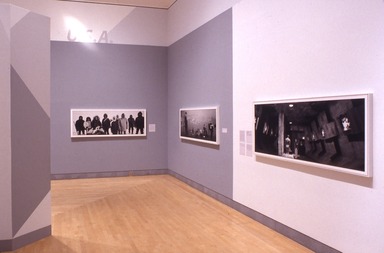
The Jewish Journey: Frederic Brenner's Photographic Odyssey, October 3, 2003 through January 11, 2004 (Image: DEC_E2003i008.jpg Brooklyn Museum photograph, 2003)
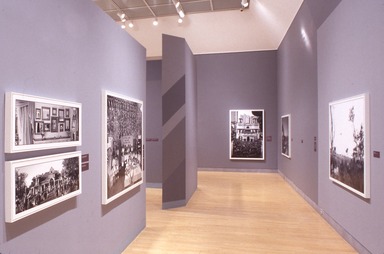
The Jewish Journey: Frederic Brenner's Photographic Odyssey, October 3, 2003 through January 11, 2004 (Image: DEC_E2003i009.jpg Brooklyn Museum photograph, 2003)
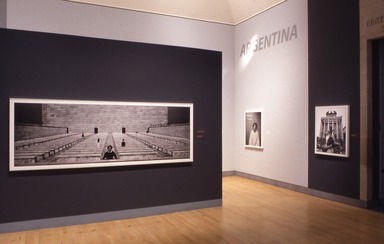
The Jewish Journey: Frederic Brenner's Photographic Odyssey, October 3, 2003 through January 11, 2004 (Image: DEC_E2003i010.jpg Brooklyn Museum photograph, 2003)

The Jewish Journey: Frederic Brenner's Photographic Odyssey, October 3, 2003 through January 11, 2004 (Image: DEC_E2003i011.jpg Brooklyn Museum photograph, 2003)

The Jewish Journey: Frederic Brenner's Photographic Odyssey, October 3, 2003 through January 11, 2004 (Image: DEC_E2003i012.jpg Brooklyn Museum photograph, 2003)
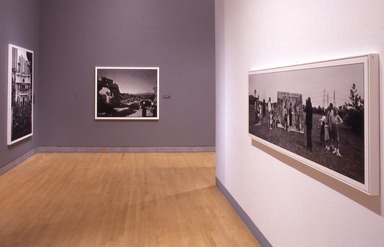
The Jewish Journey: Frederic Brenner's Photographic Odyssey, October 3, 2003 through January 11, 2004 (Image: DEC_E2003i013.jpg Brooklyn Museum photograph, 2003)
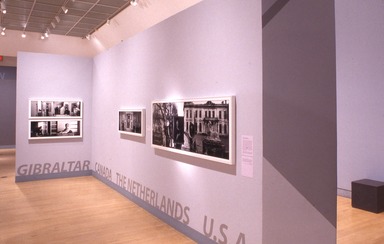
The Jewish Journey: Frederic Brenner's Photographic Odyssey, October 3, 2003 through January 11, 2004 (Image: DEC_E2003i014.jpg Brooklyn Museum photograph, 2003)
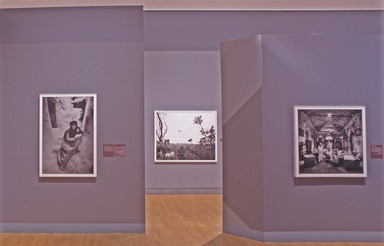
The Jewish Journey: Frederic Brenner's Photographic Odyssey, October 3, 2003 through January 11, 2004 (Image: DEC_E2003i015.jpg Brooklyn Museum photograph, 2003)
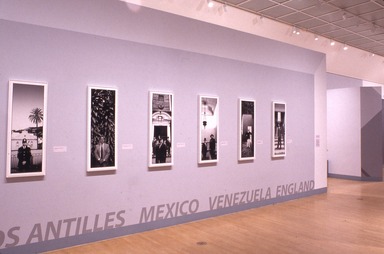
The Jewish Journey: Frederic Brenner's Photographic Odyssey, October 3, 2003 through January 11, 2004 (Image: DEC_E2003i016.jpg Brooklyn Museum photograph, 2003)
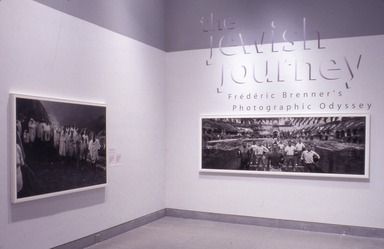
The Jewish Journey: Frederic Brenner's Photographic Odyssey, October 3, 2003 through January 11, 2004 (Image: DEC_E2003i017.jpg Brooklyn Museum photograph, 2003)

The Jewish Journey: Frederic Brenner's Photographic Odyssey, October 3, 2003 through January 11, 2004 (Image: DEC_E2003i018.jpg Brooklyn Museum photograph, 2003)
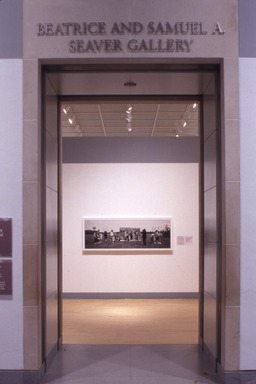
The Jewish Journey: Frederic Brenner's Photographic Odyssey, October 3, 2003 through January 11, 2004 (Image: DEC_E2003i019.jpg Brooklyn Museum photograph, 2003)
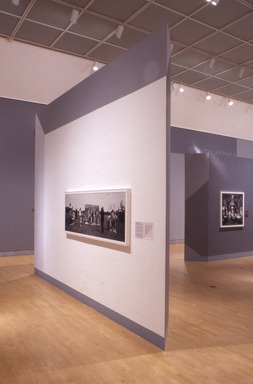
The Jewish Journey: Frederic Brenner's Photographic Odyssey, October 3, 2003 through January 11, 2004 (Image: DEC_E2003i020.jpg Brooklyn Museum photograph, 2003)
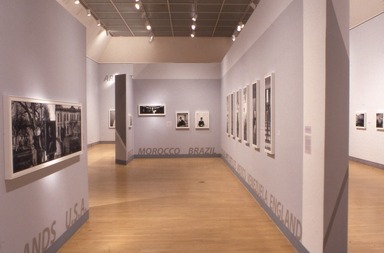
The Jewish Journey: Frederic Brenner's Photographic Odyssey, October 3, 2003 through January 11, 2004 (Image: DEC_E2003i021.jpg Brooklyn Museum photograph, 2003)
The Jewish Journey: Frederic Brenner's Photographic Odyssey
-
The Jewish Journey: Frédéric Brenner’s Photographic Odyssey
What makes the fabric of a people?
Trained as a social anthropologist, Frédéric Brenner uses a camera to document Jewish people living in diaspora—Jews scattered in various countries throughout the world. He began his journey in 1978 by photographing members of the orthodox community in Jerusalem, and then embarked on a quest which has helped him debunk a stereotype of the “archetypal Jew”—the white Ashkenazi (Central or Northern European Jewish) male. He has since visited over forty-five countries in twenty-five years; a journey that, in many ways, mirrors that of the Jewish people. Rather than continuity and commonality, Brenner has found discontinuity and paradox; instead of answers, only more questions.
The black-and-white portraits in this exhibition challenge any preconceived notions of Jewishness: what a Jewish person looks like; where a Jewish person lives; indeed, the very meaning of Jewish identity. Each location, person, and story that Brenner encountered provided inspiration for yet another project. The images displayed here demonstrate an aesthetic trajectory that developed over nearly a quarter of a century: from traditional ethnographic documents of subjects in their daily surroundings to elegant individual and family portraits, and, finally, to large-format group shots requiring the research and preparation of a major stage production. Eventually, the work led Brenner back to his own family (see image below).
This exhibition is arranged both chronologically and geographically. It includes works from long-term projects documenting the Sephardim (Jewish people who settled in Spain and Portugal before the Inquisition and their descendants), Jewish communities scattered throughout the former Soviet Union, and the diversity of Jews in the United States. Along the way, Brenner’s work unveils hidden histories of Jews in Portugal, Argentina, and Poland.
Just as Frédéric Brenner’s work has revealed a multiplicity of Jewish identities, the photographs shown here are accompanied by the voices of a variety of individuals, including the artist, his subjects, members of the Brooklyn Museum of Art community, and contributors to Diaspora: Homelands in Exile—a book of Brenner’s work just published by HarperCollins. Large panels discussing general themes apply to works throughout the exhibition. All of the works are gelatin silver photographs on fiber-based paper, unless otherwise noted.
—Dara Meyers-Kingsley, Guest Curator -
The Story of Purim
Purim, one of the most joyous holidays in the Jewish calendar, is celebrated with costumes and gaiety. It commemorates a time when the Jewish people living in ancient Persia were saved by Esther, a Jewish woman who was married to King Ahashverosh.
The villain in the story of Purim is Haman, an advisor to the king and a descendant of bitter enemies of the Israelites. All of the courtiers bowed before him except for Mordecai, Esther’s uncle, who would bow only before God. Enraged at the insult, Haman plotted to kill every Jew in the kingdom. He said to King Ahashverosh: “There is a certain people scattered abroad and dispersed
among the peoples in all the provinces of your realm. Their laws differ from those of all others. They do not keep the king’s laws, therefore it is not befitting the king to tolerate them.” The king gave Haman permission to do as he pleased with the Jews. Haman drew lots (“purim”) to choose the day on which the Jews would be killed.
Mordecai persuaded Esther to speak to the king—from whom she had hidden her Jewish identity—on behalf of her people. She fasted for three days and then revealed her Jewishness, “unveiling” herself and risking her own life to plead for the survival of the Jewish people. His love for Esther led King Ahashverosh to annull Haman’s decree. The Jews were saved, and Haman was hanged from the very gallows he had prepared for Mordecai. Purim celebrations today memorialize the reversal of reversals, when a day of sorrow became a day of joy, when mourning turned to happiness. -
Masquerade/Unveiling
This exhibition begins and ends with images of Purim celebrations from different parts of the world. The story of Purim (summarized nearby) provides a metaphor for the interlocking themes of identity and masquerade that recur throughout Frédéric Brenner’s work. In the process of constructing images to explore these themes, Brenner eventually became aware that identity itself is a construct. As Professor Daniel Dayan has said: “Identity always involves a dimension of playacting, of ‘mimicry.’ . . . Brenner shows us that identity is no more than fiction. But this in no way diminishes its power.”
Brenner alternately dresses up and unmasks his subjects. In some cases, he constructs identities for them through costume and setting, as if only this masquerade will reveal their true identities. In other cases, the subjects’ own modes of costume immediately identify them, such as the black hats and coats of observant Jews. In several works, Brenner uses nudity to unveil his subjects, stripping away our preconceived notions and presenting us with the concept of a Jewish identity unrelated to sartorial trappings.
—Dara Meyers-Kingsley, Guest Curator -
The Search for Signs
The early photographs in Brenner’s oeuvre (1978–1986) are in the tradition of ethnographic documents. Traveling the world as an anthropologist, he searched for people in their native lands, using the camera as a tool to capture the “authenticity” of his subjects in their everyday surroundings.
—Dara Meyers-Kingsley, Guest Curator
How does one identify Jewishness? What are its signs? At first, I took the archaic, the tribal—that is, the traditional—to represent “authentic” Jewishness: the black border on the men’s trousers in Jerba, in memory of the destruction of the Temple. Or in Abyssinia, the pre-Talmudic custom of women’s huts, where Jewish women confine themselves during their menstrual periods. Or the lintel of doorways in India bearing the mark of a hand steeped in the blood of a lamb in memory of the last plague in Egypt. In every photograph, I tried to include the resonant elements of Jewish practice that each group had retained. In this way I was trying to restore to each Jew his or her own face, to return to each his or her own memory—the memory of these fragments that have survived in the margins of history. I felt that only when these various—and often dissonant—elements were considered together could we truly glimpse klal Israel—the community of Israel.
—Frédéric Brenner
(From Diaspora: Homelands in Exile, © 2003 HarperCollins Publishers) -
Birobidzhan
In an attempt to create a Jewish homeland within the Soviet Union, Josef Stalin established Birobidzhan (the Jewish Autonomous Region) in 1934. Almost twenty years before the creation of the state of Israel, Jews came to this remote and sparsely populated area in the Russian far east not only from the Ukraine and Russia, but also from France, Argentina, and America, to create a Jewish state—the first since the fall of Jerusalem in 70 C.E. At the time of Frédéric Brenner’s visit in 1989, most of their descendants were about to emigrate.
Aesthetically, Brenner’s portraits from Birobidzhan stand between his early ethnographic images and the later, more orchestrated compositions. Recalling the work of the American photographer Lewis Hine (see image below), Brenner poses the Jews of Birobidzhan within the factories where they work. The machinery and equipment are critical formal elements in each photograph.
—Dara Meyers-Kingsley, Guest Curator
Birobidzhan station, on the Trans-Siberian line, is one of the last stations before the terminus, Vladivostok. Like a deserted theatre, the front of the building still bore the name “Birobidzhan” in both Cyrillic (old Slavic) and Hebrew characters. And the Birobidjaner Stern, the sole official Yiddish newspaper in the entire Soviet Union, was still produced in Birobidzhan, even though most of the articles were now written first in Russian and then translated. Until perestroika [the economic and political reforms of the 1980s], the town’s teaching corps was predominantly Jewish: if one paid attention in the streets, one could still hear Russian spoken with a Yiddish accent.
—Frédéric Brenner
(From Diaspora: Homelands in Exile, © 2003 HarperCollins Publishers) -
Rome
The work that Frédéric Brenner did in Rome in 1992 signals a major turning point in his compositional style. Inspired by the Eternal City, he utilized the power, beauty, and significance of historically loaded architectural spaces to contextualize each portrait. It was in Rome that Brenner began employing a more directorial approach, staging photographs to produce iconic images that illustrate ideas or concepts. In one project, for example, he orchestrated the removal of thousands of tourists before photographing Jewish merchants who sell Catholic souvenirs in St. Peter’s Square. Brenner’s hybrid style combines real people and places with constructed situations in a way that challenges traditional documentary photography.
—Dara Meyers-Kingsley, Guest Curator
I spent four months in Rome without taking one photograph. How could I illustrate the two-thousand-year-old Jewish presence in this ancient city? Rome, the matrix of Western civilization, but also the matrix of the Jewish Diaspora. When Jerusalem was destroyed, before the rise of Christianity, the Jews were deported to Rome, like slaves. The Jews of Rome today are the descendents of those Hebrew slaves. Many of them preserve a double identity—a spiritual loyalty to Israel and a loyalty to Rome, whose memory they incarnate.
—Frédéric Brenner
(From Diaspora: Homelands in Exile, © 2003 HarperCollins Publishers) -
The Israel Project: Exile At Home
The story of the images in this room begins with the intersection of two journeys within Frédéric Brenner’s career. The Israel project was born when Brenner serendipitously rediscovered Lewi Faez, a young father whom he had photographed ten years earlier in Yemen. This coincidence inspired Brenner to search out other subjects who had since immigrated to Israel (“made aliyah”) in order to photograph them in their new home. The resulting project culminated in a grand reunion, documented in the photograph entitled Caesarea in the exhibition’s introductory gallery and reproduced below.
The diptychs in this room provide comparisons of Brenner’s earlier, more natural or ethnographic style with his later staged works. Compare the settings of the photographs before and after the subjects have arrived in Israel. Also note the poses and modes of dress in each locale. What have the subjects changed, and what have they kept? What do they bring to the photograph, and how has the photographer directed how we see them?
—Dara Meyers-Kingsley, Guest Curator -
America Reinvented
The photographs in this gallery illustrate the many ways in which Jews have reinvented themselves in America, and also an aesthetic reinvention in Frédéric Brenner’s work. Brenner became his boldest in America. He took risks and was not afraid to make grand visual statements both in the form and in the content of the American images. His directorial presence is most evident here; each photograph’s staging and artifice become part of the reading of the image. Collecting insiders and outsiders from the American Jewish community, Brenner presents his subjects in their respective costumes: rabbis, fur traders, Civil War reenactors, bikers. They are shown dressed and undressed, live and pre-recorded, at times of celebration, solidarity, and defiance.
—Dara Meyers-Kingsley, Guest Curator -
Poland: A Story of Inversion
I didn’t want to go to Poland. Poland, today, a shadow of its former self: How was I to photograph an absence of Jews? The story is told: On August 25, 1941, at six o’clock in the morning, the Jews of Tykocin were taken away in a procession led by a trumpeter, drummer, and violinist who were forced to play the Hatikva [now the Israeli national anthem] by their Polish neighbors. They were led to a nearby forest and murdered. More than two thousand men, women, and children. Only a few managed to escape and survive. February 2002: Tykocin is a town without Jews, where a group of inhabitants, from the priest to the truck driver, the teacher and schoolchild, the baker and mechanic, dress up as the Jews whom they never saw but whose memory they wish to preserve. This is Purim—the only festival in the Jewish calendar that is as much about inversion as it is about remembrance.
—Frédéric Brenner
(From Diaspora: Homelands in Exile, © 2003 HarperCollins Publishers) -
Inventory
Between June 1993 and September 1995, Frédéric Brenner traveled throughout the United States. Overwhelmed by the material culture, he photographed everyday examples of Jewish iconography, creating a veritable visual diary. Not originally intended as artworks per se, these pictures developed into an incredible inventory of the artifacts of material and popular culture.
Once he realized the vastness and richness of this accumulation of images, Brenner organized the material and added specific images to make the collection more exhaustive. This installation of the original photos—used as mock-ups for the book Jews/America: A Representation—marks the first exhibition of the Inventory. The 731 images are alphabetized according to definition or description, which can be found in the accompanying labels.
—Dara Meyers-Kingsley, Guest Curator -
Lech Lecha: Go Forth
The word diaspora, or “dispersal,” is used to describe the scattering of a specific group of people from their ancestral home. Several peoples who have experienced this phenomenon are now said to live “in diaspora,” including Jews, Africans, and Chinese. The history of the Jewish people in particular is partially defined by the notion of diaspora. Biblical accounts describe Jews living in exile, wandering the world, a people without territory. Brenner asks: “Since God spoke to Abraham four thousand years ago, have not the Jewish people lived in a global village? While most nations traditionally define themselves within and through territory, Abraham brings into being an original, subversive, radically different ‘other’ way of being in the world. We find that encapsulated in God’s injunction to Abraham: ‘Go forth, [Lech lecha] from your land, from your kindred, from your father’s home, to the land that I will let you see’ (Genesis 12:1). ”
Brenner’s project to document the diversity of Jewish people throughout the world attempts to question differences as well as commonalities created by this shared exilic experience. The vision of Israel as a Jewish homeland is another important aspect of the notion of diaspora that Brenner examines, and his Israeli photographs suggest that Israel itself is diasporic, representing a multiplicity of cultures.
—Dara Meyers-Kingsley, Guest Curator
-
August 8, 2003
Contemporary French photographer Frédéric Brenner has spent the last twenty-five years traveling the world documenting the lives of Jews in over forty countries on five continents. More than 140 of his most compelling photographs drawn from approximately 80,000 negatives will be presented in The Jewish Journey: Frédéric Brenner’s Photographic Odyssey, at the Brooklyn Museum of Art from October 3, 2003 through January 11, 2004.
Born in Paris in 1959 and trained in social anthropology, Brenner also draws upon history and philosophy for his project to capture images of the Jewish Diaspora in such places as India, Italy, China, Ethiopia, Yemen, Mexico, Russia, Canada, America, and Israel. By establishing visual histories of Jewish communities in flux, Brenner records the evolution of Jewish civilization, debunking stereotypes and illuminating the concept of cultural diversity while exploring the myriad reinventions
of the Jewish people.
Brenner made his first photograph—a child dressed as an angel running down a back alley in the Mea Shearim quarter of Jerusalem—when he was 18 years old. Since then, tens of thousands of Brenner’s contrasting and contradictory=photographs have challenged society’s stereotypical images of what it means to be Jewish.
By photographing Jewish subjects such as a village woman in Ethiopia, a man of Iraqi origin in Calcutta, leather-clad bikers in Florida and barbers with Muslim customers in Tajikistan, he has created a new vision of Jewish life in far-flung corners of the world.
His visually stunning, exquisitely crafted black-and-white photographs—many of which were taken with wide-angle lenses—act as a metaphor for the scope and dynamism of one of the world’s oldest, most diverse cultures. Unlike more conventional photographic depictions of Jewish life, which tend to focus on specific moments or high points, Brenner’s portraits capture both ordinary and extraordinary individuals and groups set up for the camera.
The Jewish Journey: Frédéric Brenner’s Photographic Odyssey at the Brooklyn Museum of Art is being organized by guest curator Dara Meyers-Kingsley. It is made possible by the Righteous Persons Foundation and other generous friends of the Brooklyn Museum of Art. Coinciding with the exhibition’s opening will be the two-volume book Diaspora: Homelands in Exile, published by Harper Collins. A worldwide tour will follow the BMA’s exhibition. Venues are to be announced.
View Original -
August 1, 2003
Contemporary French photographer Frédéric Brenner has spent the last twenty-five years traveling the world documenting the lives of Jews in over forty countries on five continents. More than 140 of his most compelling photographs drawn from approximately 80,000 negatives will be presented in The Jewish Journey: Frédéric Brenner’s Photographic Odyssey, at the Brooklyn Museum of Art from October 3, 2003 through January 11, 2004.
Born in Paris in 1959 and trained in social anthropology, Brenner also draws upon history and philosophy for his project to capture images of the Jewish Diaspora in such places as India, Italy, China, Ethiopia, Yemen, Mexico, Russia, Canada, America, and Israel. By establishing visual histories of Jewish communities in flux, Brenner records the evolution of Jewish civilization, debunking stereotypes and illuminating the concept of cultural diversity while exploring the myriad reinventions of the Jewish people.
Brenner made his first photograph—a child dressed as an angel running down a back alley in the Mea Shearim quarter of Jerusalem—when he was 18 years old. Since then, tens of thousands of Brenner’s contrasting and contradictory photographs have challenged society’s stereotypical images of what it means to be Jewish.
By photographing Jewish subjects such as a village woman in Ethiopia, a man of Iraqi origin in Calcutta, leather-clad bikers in Florida and barbers with Muslim customers in Tajikistan, he has created a new vision of Jewish life in far-flung corners of the world.
His visually stunning, exquisitely crafted black-and-white photographs—many of which were taken with wide-angle lenses—act as a metaphor for the scope and dynamism of one of the world’s oldest, most diverse cultures. Unlike more conventional photographic depictions of Jewish life, which tend to focus on specific moments or high points, Brenner’s portraits capture both ordinary and extraordinary individuals and groups set up for the camera.
The Jewish Journey: Frédéric Brenner’s Photographic Odyssey at the Brooklyn Museum of Art is being organized by guest curator Dara Meyers-Kingsley. It is made possible by the Righteous Persons Foundation and other generous friends of the Brooklyn Museum of Art. Coinciding with the exhibition’s opening will be the two-volume book Diaspora: Homelands in Exile, published by Harper Collins. A worldwide tour will follow the BMA’s exhibition. Venues are to be announced.
Brooklyn Museum Archives. Records of the Department of Public Information. Press releases, 1995 - 2003. 2003, 048-49.
View Original
